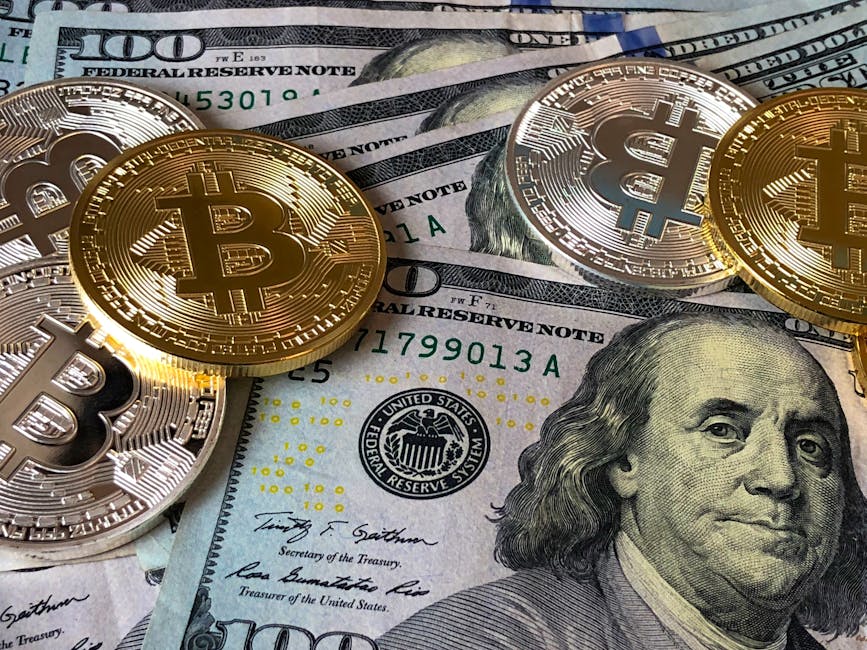Future Trends in Blockchain Technology
You’re on the cusp of a blockchain revolution that’s decentralising finance, making quantum-resistant cryptography a must-have, and turbocharging network performance with AI. Traditional banking is being turned upside down, democratising access to financial services. Quantum computers are forcing cryptographers to develop and deploy quantum-resistant cryptography advances. Meanwhile, blockchain interoperability solutions are enabling seamless data exchange between networks. And that’s just the beginning – wait until you see what’s next in sustainable blockchain networks, digital identity verification, and regulatory framework evolution. Buckle up, because the blockchain future is about to get a whole lot more interesting.
Key Takeaways
• Real-time security threat detection will become essential to keep blockchain networks secure and reliable.• Sustainable blockchain networks will focus on reducing environmental impact through innovative approaches.• Digital identity verification will give individuals control over their digital identities through decentralised IDs and immutable records.• Regulatory frameworks will evolve, emphasising self-regulation, sandbox testing, and shifting compliance standards.• Artificial intelligence integration will optimise blockchain performance, scalability, and security through autonomous decision-making.
Decentralised Finance Revolution

You’re about to enter a financial sphere where intermediaries are obsolete, and traditional banking systems are turned upside down – welcome to the decentralised finance revolution, where blockchain technology is democratising access to financial services.
You’re no longer bound by geographical or socioeconomic constraints, and financial inclusion is finally within reach. With decentralised finance, the playing field is levelled, and anyone with an internet connexion can participate in the global economy.
Open banking is a pivotal aspect of this revolution, allowing individuals to take control of their financial data and share it with whoever they choose. No longer will banks and financial institutions hold all the power; you’ll have the freedom to make your own financial decisions.
This shift in power dynamics is a game-changer, especially for the unbanked and underbanked populations.
The decentralised finance revolution isn’t just about disrupting traditional banking systems; it’s about creating a more inclusive and equitable financial ecosystem. With blockchain technology, financial services become more accessible, affordable, and secure.
You’ll be able to send and receive payments, access loans, and invest in assets without the need for intermediaries. The future of finance is decentralised, and you’re about to be a part of it.
Buckle up, because the decentralised finance revolution is just getting started.
Quantum-Resistant Cryptography Advances

The future of blockchain tech isn’t all sunshine and rainbows – quantum computers are looming on the horizon, threatening to crack your precious cryptographic codes.
You’re probably thinking, ‘Wait, I thought we were safe with our fancy encryption methods?’
Think again, because quantum computers can potentially break them, and that’s exactly why we need to talk about the evolution of cryptography to stay one step ahead of these quantum threats.
Quantum Computing Threats
You’re about to enter a cybersecurity nightmare. Quantum computers, capable of processing vast amounts of data exponentially faster than classical computers, will inevitably cripple traditional public-key cryptography, forcing the rapid development of quantum-resistant cryptography advances.
In the sphere of cyber warfare, the advent of quantum computing poses a significant threat to the security of your data. Encryption vulnerabilities will be exploited, leaving your sensitive information exposed to malicious actors.
With quantum computers, hackers will be able to break through even the most secure encryption protocols, rendering your data protection useless.
You can’t afford to be complacent; the need for quantum-resistant cryptography is more pressing than ever. Cyber warfare is an ongoing battle, and you must stay one step ahead of the attackers.
The clock is ticking, and the development of quantum-resistant cryptography is the only way to safeguard your data remains secure in a post-quantum world.
Cryptography Evolution Path
In response to the looming quantum threat, cryptographers are racing to develop and deploy quantum-resistant cryptography advances, leveraging cutting-edge algorithms and protocols to safeguard the integrity of sensitive data.
You’re probably thinking, ‘What’s the big deal? My data’s secure, right?’ Wrong. Quantum computers will soon be able to break current encryption protocols like a hot knife through butter. That’s why researchers are working on cryptographic hash functions, like SHA-3, and encryption protocols, such as lattice-based cryptography and code-based cryptography, to stay one step ahead of the quantum threat.
Some key cryptography advancements to keep an eye on:
- Lattice-based cryptography: Using complex maths problems to create virtually unbreakable encryption.
- Code-based cryptography: Employing error-correcting codes to secure data.
- Multivariate cryptography: Leveraging complex equations to create secure encryption protocols.
These advancements will be vital in protecting your sensitive data from the impending quantum threat. So, buckle up and get ready for a cryptography revolution!
Blockchain Interoperability Solutions

You’re probably tyred of dealing with blockchain silos, where each chain operates in its own bubble.
Well, it’s time to break free from those constraints with seamless chain communication, enabling a free flow of information between disparate networks.
Seamless Chain Communication
By 2025, experts predict that seamless chain communication will be the norm, allowing for frictionless data exchange between disparate blockchain networks. You’ll no longer have to worry about the headaches of data silos and network fragmentation. With seamless chain communication, you’ll be able to effortlessly share data, tokens, or assets across different blockchain ecosystems.
Network Synchronisation: Imagine being able to synchronise data in real-time across multiple blockchain networks, ensuring that all ledgers are up-to-date and accurate.
Data Harmonisation: Say goodby to data inconsistencies and hello to seamless data exchange, thanks to standardised data formats and protocols.
Frictionless Interoperability: With seamless chain communication, you’ll be able to move assets, data, or tokens between different blockchain networks without any hiccups or middlemen.
This isn’t just a pipe dream – it’s the future of blockchain technology. And it’s coming sooner than you think.
Unified Network Architecture
Unified network architecture is the lynchpin to achieving true blockchain interoperability, allowing you to seamlessly interact with diverse blockchain networks as if they were a single, cohesive system. In a nutshell, it’s the holy grail of blockchain communication – and it’s about time, too, since we’re tyred of dealing with siloed networks that can’t talk to each other.
In a unified network architecture, you’ll see the integration of network slicing, which enables the creation of multiple virtual networks on top of a shared physical infrastructure. This means you can allocate resources more efficiently and customise network performance to meet specific use cases.
Edge computing also plays a vital role, as it enables data processing and analysis at the edge of the network, reducing latency and improving real-time decision-making.
With a unified network architecture, you’ll be able to tap into the collective potential of diverse blockchain networks, releasing new use cases and applications. Imagine being able to seamlessly interact with different blockchain networks, leveraging their unique strengths and capabilities to create something entirely new.
Yeah, it’s a game-changer. And, with network slicing and edge computing leading the charge, the future of blockchain interoperability is looking brighter than ever.
Artificial Intelligence Integration

As blockchain technology continues to evolve, it’s becoming increasingly clear that artificial intelligence integration will play a pivotal role in optimising its performance and scalability.
You’re probably thinking, ‘AI? Isn’t that just for self-driving cars and robots?’ Not quite. In the blockchain world, AI is about to take centre stage, and it’s about time.
Just a few ways AI is about to revolutionise blockchain:
Intelligent Contract Execution: Autonomous agents will analyse and execute smart contracts faster and more efficiently, reducing latency and increasing overall network performance.
AI-Powered Node Management: AI will optimise node deployment, guaranteeing the most efficient use of resources and minimising the risk of network congestion.
Real-Time Anomaly Detection: AI-powered systems will detect and respond to potential security threats in real-time, keeping your blockchain network secure and reliable.
As AI integrates with blockchain, we’ll need to tackle the elephant in the room: AI ethics. How will we certify that autonomous agents are alined with human values and don’t become rogue agents? It’s a challenge we must address head-on to harness the full potential of AI-powered blockchain.
Sustainable Blockchain Networks

You’re probably wondering how blockchain, notorious for its energy-guzzling reputation, can possibly claim sustainability as a selling point. The irony isn’t lost on anyone. However, the tide is changing, and sustainable blockchain networks are becoming a reality.
Sustainable blockchain networks focus on reducing the environmental impact of blockchain operations. This is achieved through innovative approaches like energy harvesting and green mining. Energy harvesting involves using renewable energy sources, such as solar or wind power, to fuel blockchain operations. Green mining, on the other hand, involves optimising mining processes to reduce energy consumption.
Here’s a breakdown of sustainable blockchain networks:
| Sustainable Approach | Description |
|---|---|
| Energy Harvesting | Utilises renewable energy sources to power blockchain operations |
| Green Mining | Optimises mining processes to reduce energy consumption |
| Proof of Stake (PoS) | Replaces energy-intensive PoW with a more energy-efficient consensus algorithm |
| Consortium Blockchain | Limits the number of nodes, reducing energy consumption and increasing efficiency |
| Off-Chain Transactions | Processes transactions off the main blockchain, reducing energy consumption |
These innovative approaches are revolutionising the blockchain landscape, making sustainability a key selling point for blockchain technology. As the industry continues to evolve, we can expect to see even more innovative solutions emerge.
Digital Identity Verification

How can blockchain technology, notorious for its anonymity, possibly guaranty secure digital identity verification? You’d think it’s a contradiction, but hear me out. Blockchain’s decentralised nature can actually work in favour of secure digital identities.
The concept of Self Sovereign Identity (SSID) allows individuals to have full control over their digital identities, storing them securely on a blockchain. This means you’re in charge of who accesses your personal info. Decentralised IDs, like Ethereum-based Identity Tokens, enable secure authentication without relying on a central authority.
Blockchain-based digital identity verification is the future for a few reasons:
- Immutable: Blockchain-based identities are tamper-proof, eliminating the risk of identity theft or alteration.
- Decentralised: No single entity controls your identity, reducing cybersecurity risks.
- Autonomous: You have full control over who accesses your personal info, guaranteeing privacy and security.
In a world where cybersecurity risks are growing, blockchain-based digital identity verification offers a beacon of hope. By taking control of your digital identity, you’re not only protecting yourself but also contributing to a safer online ecosystem.
Regulatory Framework Evolution

Blockchain technology’s decentralised nature has regulators scrambling to create a framework that balances innovation with protection, and you’re about to be caught in the crossfire. As the blockchain ecosystem continues to evolve, you can bet your bottom dollar that regulatory bodies will be hot on its heels, trying to establish some semblance of order.
The good news is that governments are starting to take a more nuanced approach to blockchain regulation. Rather than stifling innovation with overly broad legislation, many are opting for a more flexible, sandbox-style approach. This allows them to test and refine their regulatory frameworks in real-time, without choking off the very innovation they’re trying to encourage.
Of course, this also means you’ll need to stay on top of shifting compliance standards and government oversight. Expect to see more emphasis on self-regulation, with industry leaders taking an active role in shaping their own compliance frameworks. It’s not exactly a free-for-all, but it’s a step in the right direction.
As the regulatory landscape continues to evolve, you can expect to see more clarity around issues like token classification, AML/KYC requirements, and tax treatment. It’s about time, if you ask me – the blockchain space has been crying out for some semblance of clarity for years. So buckle up, buttercup, and get ready to navigate the wild west of blockchain regulation.
Conclusion
You’re about to witness the blockchain revolution go into hyperdrive!
As decentralised finance takes centre stage, quantum-resistant cryptography becomes the norm, and interoperability solutions bridge the gap between chains.
AI integration amplifies efficiency, sustainable networks reduce the carbon footprint, and digital identity verification becomes a breeze.
And just when you thought it was all coming together, regulatory frameworks will evolve to keep pace.
Buckle up, because the future of blockchain is about to move at lightspeed!
Contact us to discuss our services now!
